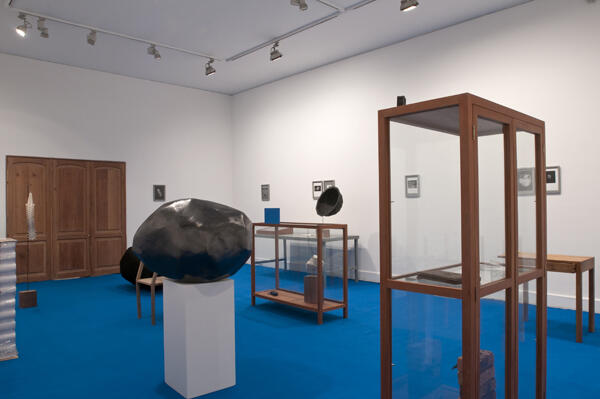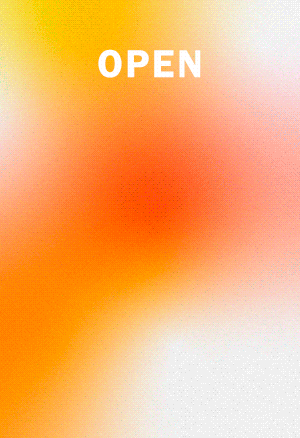Mateo López
Casas Riegner, Bogotá
A collection of diverse actual and simulated objects, in which the only conceptual convergence consists in their being the recordings of a journey midway between imaginary and real, compose Mateo López’s exhibition, titled “Avenida Primavera, Casa No. 2”, at Casas Riegner Gallery, in Bogotá. The utilization of drawing as a tool to document memory and the passing of time is a constant in this artist’s production. For this reason, a small book of drawings, apart from being an exploratory diagram, is simultaneously a guide to the exhibit and provides consistency to this array of objects, integrating them into a narrative discourse which proposes to the viewer that he/she inhabit the simulated, re-created spaces of the twelve installations that make up this exhibition.

As a spectator, I can divide this exhibit into three parts. The gallery’s entrance hall, where there is an old suitcase; an installation composed of cardboard shelves in one of the showrooms, and an area of cubicles in the next room, beginning by one that appears to be a bedroom and ending in another that resembles an exhibition of natural history.
When one sees the suitcase at the gallery entrance, the reference to travel becomes evident, all the more so if one considers the importance that the artist has assigned to the recording of his travels over the course of his career. The suitcase, which appears worn out and isolated under a staircase, constitutes the first trap set up for the viewer; one does not know if it is a found object, if it belongs to the artist, or if it has been intervened upon to make it look rickety, the only thing that is certain is that it is still a suitcase, that it is real, and that it makes reference to a trip. The next room includes a large number of shelves, all of them made of cardboard and painted green, and some ceiling hanging lights. They provide the setting for a space devoted to filing away material, and I find in this room the second key to this exhibit. López has recreated a space where things can be stored away; it may be the viewer’s own experience, his /her own memory, which are as fragile as the substance and the history that construct his/her ephemeral identity.
But up to this point, no experience has become consolidated; only when one walks into the third space, in the second gallery room, a series of personal experiences that the spaces and the objects propose begin to accumulate. In the first cubicle, one may recognize a mattress, a lamp, a drawing board on which there are several pages and a pencil suggesting an intimist discourse on his practice as a draftsman, immersed in a sound that invades the space. After going through a door, a second space hosts a sofa and a door made of cardboard resting against the wall; it all ends when one reaches a space built in the manner of a museum of natural history, filled with glass cases and simulated objects, many of them made of paper, motivating the viewer to make up countless relations in which the drawing book turns out to be the key to enter the world of the artist’s imagination.
This exhibit only leads to the limit − on which creation is focused in contemporary art − through that perverse simulation that has pervaded every layer of our present-day existence, as stated by Jean Baudrillard when he coined his phrase “ epidemic of appearances” in the early 1990s. The only difference in López’s case is the ludic logic he imparts to his objects and drawings, which at least allows us to experience the hard reality that populates our own everyday life. .
-
 View of the installation at Casas Riegner Gallery/Photograph Oscar Monsalve. Courtesy Casas Riegner Gallery.
View of the installation at Casas Riegner Gallery/Photograph Oscar Monsalve. Courtesy Casas Riegner Gallery.
Vista de la instalación en la Galería Casas Riegner / Fotografía Oscar Monsalve. Cortesía Galería Casas Riegner.




